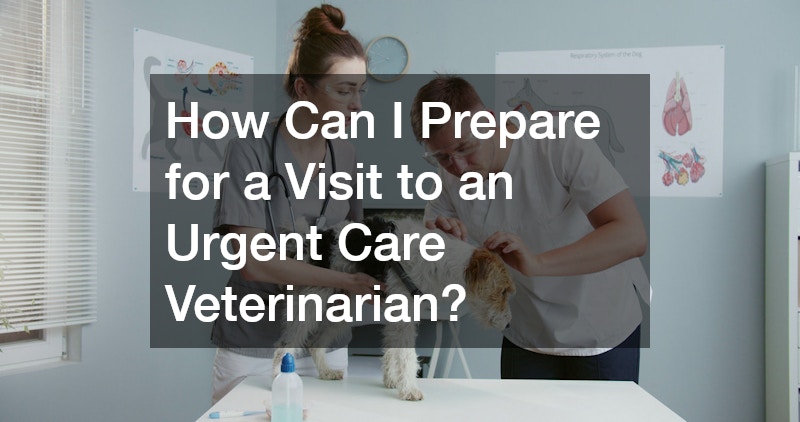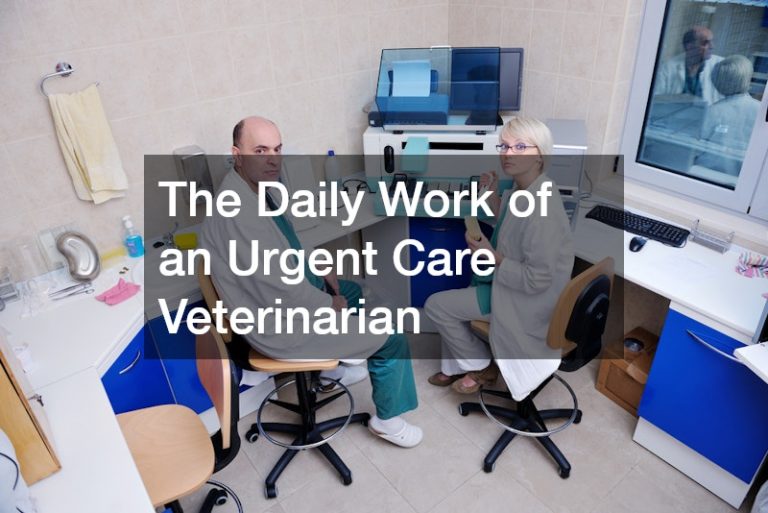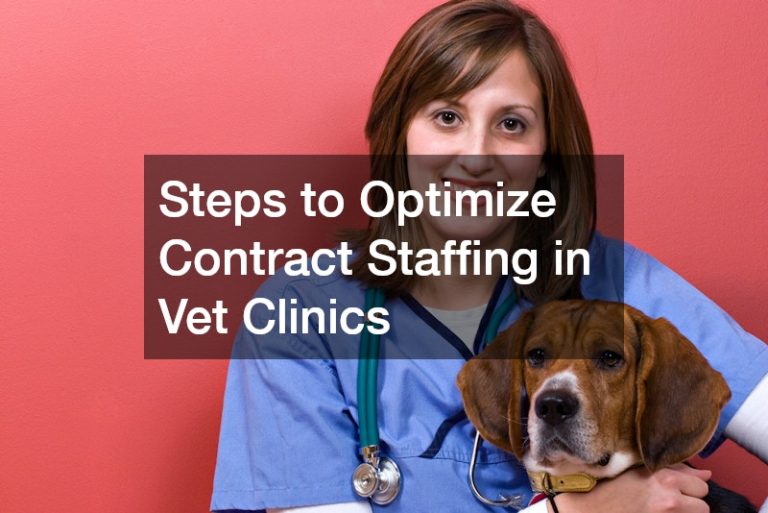The well-being of our pets often hinges on timely medical intervention. While routine veterinary care covers regular check-ups and preventive treatments, there are times when our pets experience sudden health issues that require urgent attention. This article outlines the reasons why seeing urgent care veterinarians is crucial, addressing common questions and scenarios that pet owners frequently encounter.
What is Urgent Care for Pets and How is it Different from Regular Veterinary Care?
Understanding Urgent Care Services
Urgent care for pets involves providing immediate assistance for sudden and unforeseen health issues that cannot wait for a regular veterinary appointment. These services are designed to address conditions like injuries, severe illness symptoms, or acute discomfort that require prompt attention.
Unlike emergency animal hospitals, which deal with life-threatening situations, urgent care clinics focus on non-life-threatening cases needing quick intervention. This approach ensures that pets receive the appropriate care level for unexpected health issues without unnecessary delays.
Urgent care services offer extended hours, making them accessible during times when regular vet offices may be closed. This focus on availability enhances the ability of pet owners to seek help when sudden health problems arise outside typical business hours.
Comparison with Regular Veterinary Care
Regular veterinary care primarily addresses preventive health measures, routine check-ups, and ongoing treatments for chronic conditions. On the other hand, urgent care is structured to address unexpected health concerns that demand immediate attention.
A significant difference lies in the availability of each service; urgent care facilities often offer extended hours or even 24/7 access compared to regular vet clinics. Furthermore, urgent care centers are equipped to rapidly assess and stabilize pets, a service not typically provided during a standard wellness visit.
Urgent care veterinarians are trained to provide rapid assessments and treatments, which can be crucial in preventing potentially escalating health issues. This quick response capability can make a significant difference in the outcome for pets suffering from sudden ailments.
When Should I Consider Taking My Pet to Urgent Care?
Recognizing Emergency Symptoms
Pet owners should be vigilant about signs such as difficulty breathing, persistent vomiting, or sudden lethargy, which may indicate the need for urgent care. Timely identification of these symptoms can prevent the exacerbation of the animal’s condition.
Trauma cases, such as those resulting from accidents or falls, also necessitate immediate medical attention. Quick intervention by an urgent care veterinarian can significantly impact the speed and success of recovery.
Engaging with urgent care for pets is prompted by acute, dramatic changes in a pet’s demeanor or behavior, which could signify serious underlying health issues. Recognizing these signs early facilitates successful outcomes.
Evaluating the Urgency of Situations
To determine the urgency, consider the nature and progression of the symptoms: has there been a sudden onset, or have symptoms worsened rapidly? Urgent care is appropriate when delays could lead to severe health decline.
Assess if the situation compromises basic bodily functions; any disruption to normal eating, drinking, or elimination habits should raise concern. The fact that dog bites cause nearly 77% of all reported animal bite injuries in the United States underscores the importance of evaluating urgency.
When in doubt, contacting the urgent care clinic can guide whether immediate intervention is necessary. This proactive approach ensures pets receive timely care tailored to the severity of their condition.
What Should I Expect During an Urgent Care Visit?
Initial Procedures and Triage
Upon arrival at an urgent care facility, pets undergo a prompt triage assessment to prioritize care based on the severity of their condition. This initial step ensures that pets in critical need receive immediate attention.
Pet owners should be prepared to provide a concise summary of the pet’s symptoms and any relevant medical history. This information facilitates faster diagnosis and treatment accordingly.
Triage procedures often include a brief visual exam to identify overt issues and stabilize the pet if necessary. This efficient process is vital in mitigating further health deterioration.
Treatment and Follow-Up Care
Treatments provided during an urgent care visit are tailored to address immediate health concerns, such as administering medications or conducting minor surgical procedures. Post-treatment, pets may be monitored to ensure recovery stability.
Follow-up care often involves detailed instructions from the veterinarian, including care management at home and any necessary return visits. This continuity of care plays a crucial role in ensuring a full recovery.
The coordination between urgent care and regular veterinarians helps maintain a comprehensive approach to the pet’s ongoing health management. This collaborative effort ensures pets benefit from a consistent standard of care.
How Can I Prepare for a Visit to an Urgent Care Veterinarian?
Information to Provide
Having a checklist of relevant documents and information ready can expedite the urgent care process. Essential items include records of recent vaccinations, medications, and any known allergies.
Notifying staff of changes in your pet’s behavior or unusual symptoms can assist in the diagnostic process. Accurate and thorough information supports the veterinary team in making informed medical decisions quickly.
Being organized helps ensure that no critical detail is overlooked during a stressful situation, facilitating a smoother visit. Comprehensive preparation aids the veterinarian in delivering efficient care.
Reducing Stress for You and Your Pet
Staying calm and reassuring your pet can help minimize anxiety for both of you during stressful medical emergencies. Pets can be sensitive to their owners’ emotions, so maintaining a soothing demeanor is beneficial.
Consider bringing your pet’s favorite toy or blanket to provide comfort during potentially unsettling procedures. Familiar items can supply a sense of security, aiding in stress mitigation while waiting for care.
Practicing relaxation techniques, such as deep breathing or gentle talking, can help maintain a calming influence over your pet. These efforts promote a more peaceful environment in urgent situations.



